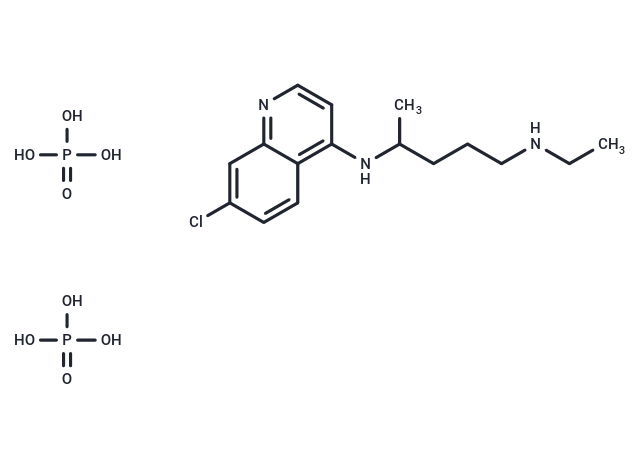Shopping Cart
- Remove All

Your shopping cart is currently empty


| Pack Size | Price | Availability | Quantity |
|---|---|---|---|
| 2 mg | $193 | 5 days | |
| 5 mg | $328 | 7-10 days | |
| 10 mg | $595 | 7-10 days |
| Description | Desethyl chloroquine diphosphate is the main deethyl metabolite of chloroquine. Chloroquine diphosphate is an inhibitor of autophagy and toll-like receptors (TLRs). Chloroquine diphosphate has anti-plasma activity. |
| In vivo | Intraperitoneal injection of chloroquine was used in wild-type and Huntington's disease (Q175/Q175) mice. LC-MS/MS is used to compare the levels of chloroquine and its metabolites in blood, brain and muscle tissue. The concentration of chloroquine is low (5-15M), but within 4-24 hours after the last use, it is more stable in brain tissue than blood or muscle. The level of deethylchloroquine, the active chloroquine metabolite in the muscle and blood, decreased 24 hours after injection, while the level of deethylchloroquine in the brain was lower, rising slightly during the same period. |
| Molecular Weight | 487.81 |
| Formula | C16H28ClN3O8P2 |
| Cas No. | 247912-76-1 |
| Storage | Powder: -20°C for 3 years | In solvent: -80°C for 1 year |

Copyright © 2015-2024 TargetMol Chemicals Inc. All Rights Reserved.